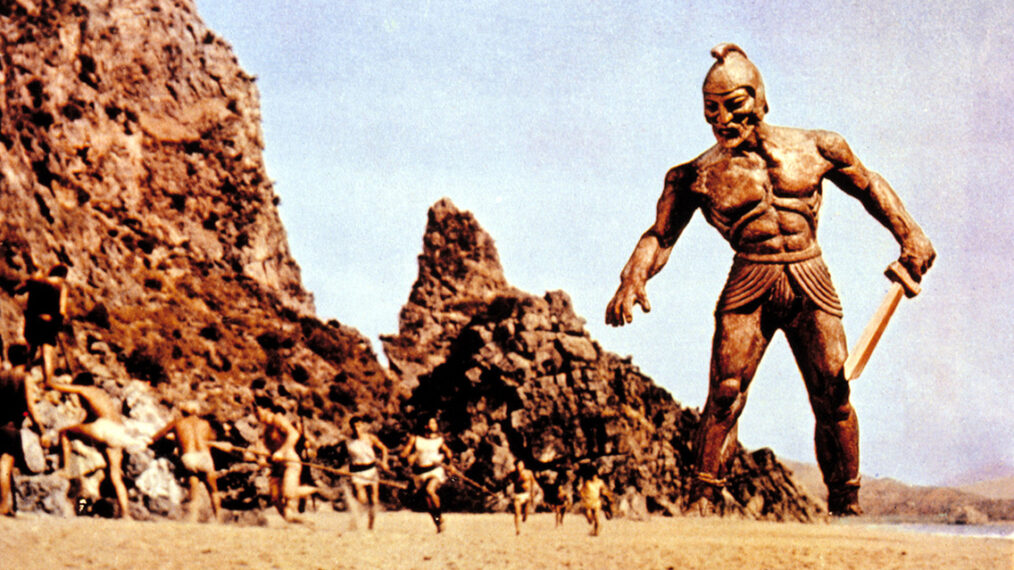‘The Beast From 20,000 Fathoms’: The First Atomic Age Giant Monster Movie Was Unleashed on the World 70 Years Ago
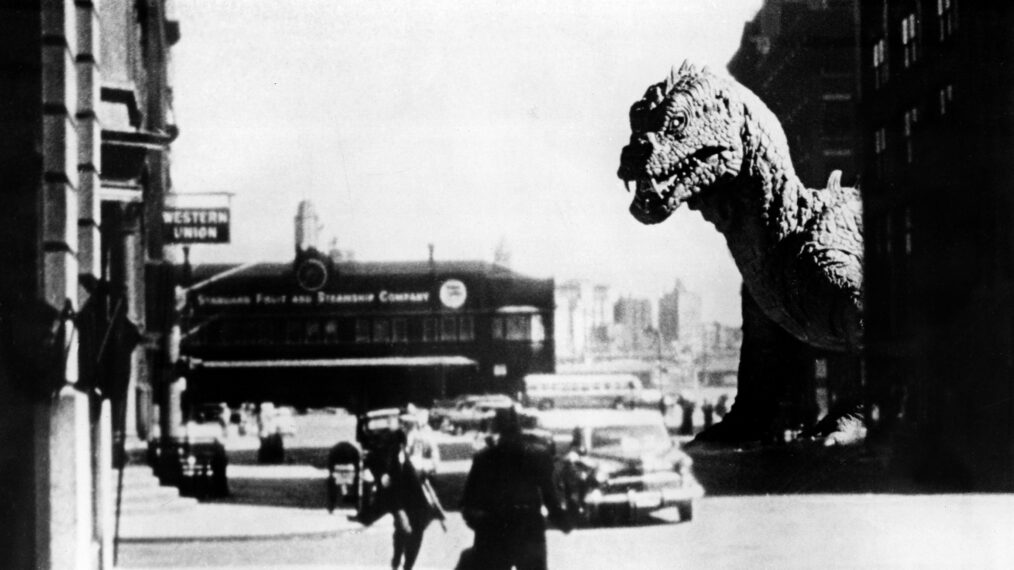
When Warner Bros.’ The Beast From 20,000 Fathoms was released in theaters on June 13, 1953, it was the harbinger of the type of giant monster movie that would quickly become a popular box-office staple during the early Atomic Age.
It was also an influence on other, subsequent classics in that genre like Warners’ own Them! (which was groundbreaking in its own right as the first “big bug” movie of that decade) and Toho’s Godzilla, both the following year. About three decades after its release, Beast also became one of my personal favorite creature features whenever I was able to catch it on TV as a kid, and I still love it.
The Beast From 20,000 Fathoms expands Ray Bradbury’s Saturday Evening Post short story “The Fog Horn” into a tale of a dinosaur (a fictional “Rhedosaurus” invented by the filmmakers) awakened from its long Arctic hibernation by atomic testing. In a search for others like itself, the gigantic amphibious creature is impelled by primal instincts to make its way through the North Atlantic toward what used to be its ancestral breeding grounds millions of years ago, but what now happens to be, unfortunately, New York City.
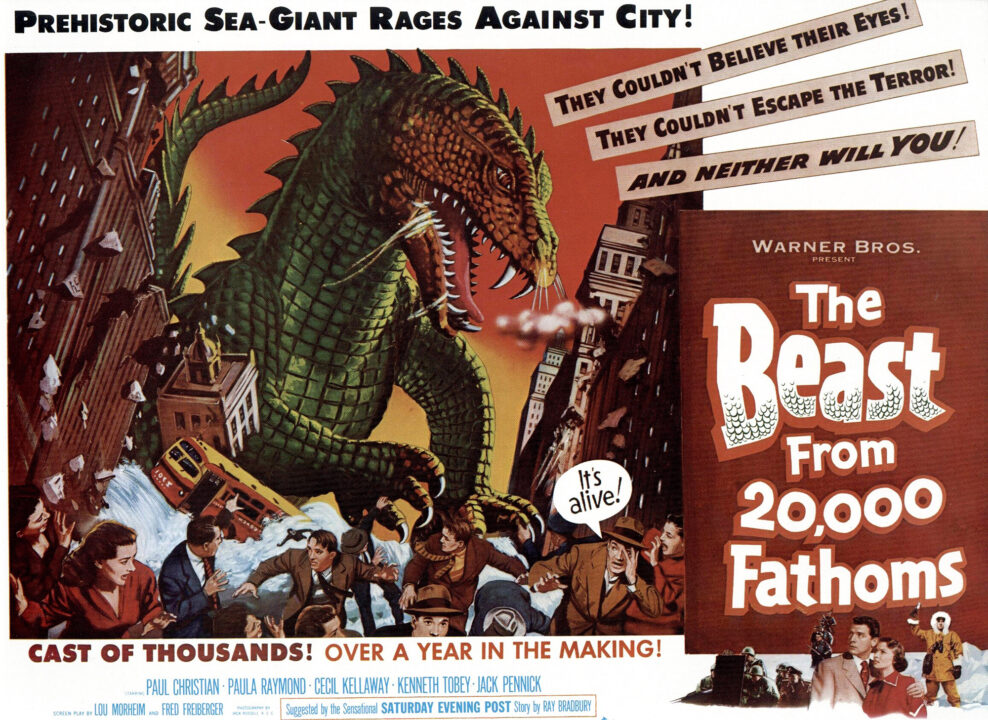
(Courtesy Everett Collection)
Giant monsters had attacked cities in movies before, of course, starting way back in the silent era when a Brontosaurus rampaged through London in 1925’s The Lost World, which was famously followed by King Kong‘s tour of the Big Apple in 1933.
But the idea of one of these creatures being resurrected, or created, by the frightening new power of atomic bombs and nuclear energy was new with Beast, and that concept perfectly played on the fears audiences at the time would have had of both the unknown impacts these forces might have along with what was already known of their horrific potential, as seen in the aftermaths of Hiroshima and Nagasaki less than a decade earlier.
Wonderfully overwrought questions like this one posed in the trailer for Beast would become frequent, often closing, lines in movies of its type, usually uttered with grave seriousness by some expert:
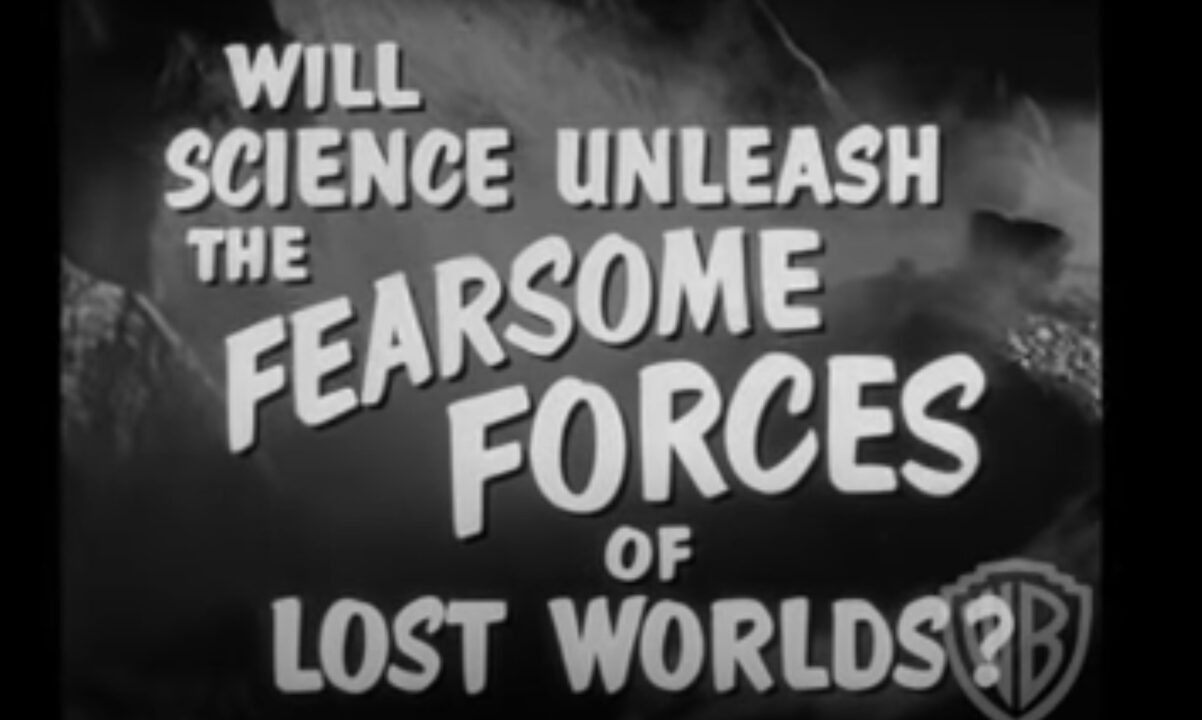
(youtube.com/@WarnerBrosCom)
The trailer, seen below, also offers other questions of this sort, along with teasing (maybe even spoiling?) plenty of cool shots of the Rhedosaurus “wreaking his prehistoric fury on modern man and his puny machines.”
A Variety review of The Beast From 20,000 Fathoms around the time of its release noted that “special credit” for bringing all that prehistoric fury to life “should go to Ray Harryhausen for the socko technical effects.”
That reviewer was correct; as always, the work here by Harryhausen is, indeed, “socko.”
The production was the first on which the legendary SFX artist was in full charge of the technical effects, and the first on which he used his famed “Dynamation” stop-motion technique that effectively allowed models of unreal creatures to seemingly interact with real-world footage.
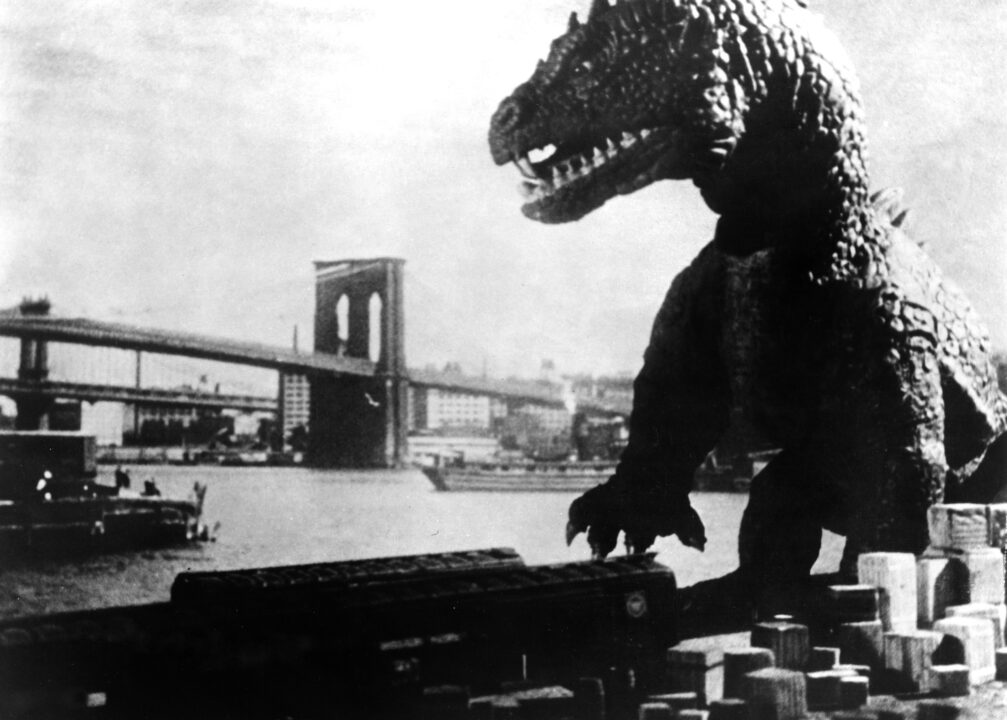
“Hello, New York!” (Courtesy Everett Collection)
Harryhausen continued using and improving upon his Dynamation to thrill audiences with many other terrific films for nearly 30 years afterward, up until his last production before retirement, 1981’s Clash of the Titans.
His Rhedosaurus is as impressive as any of his later creations, and his animations of the creature simultaneously lend it not only a terrible ferocity, but also a bit of the pathos found in Bradbury’s wonderful, and actually quite moving, little tale, as the awakened beast rampages alone through an unfamiliar world.
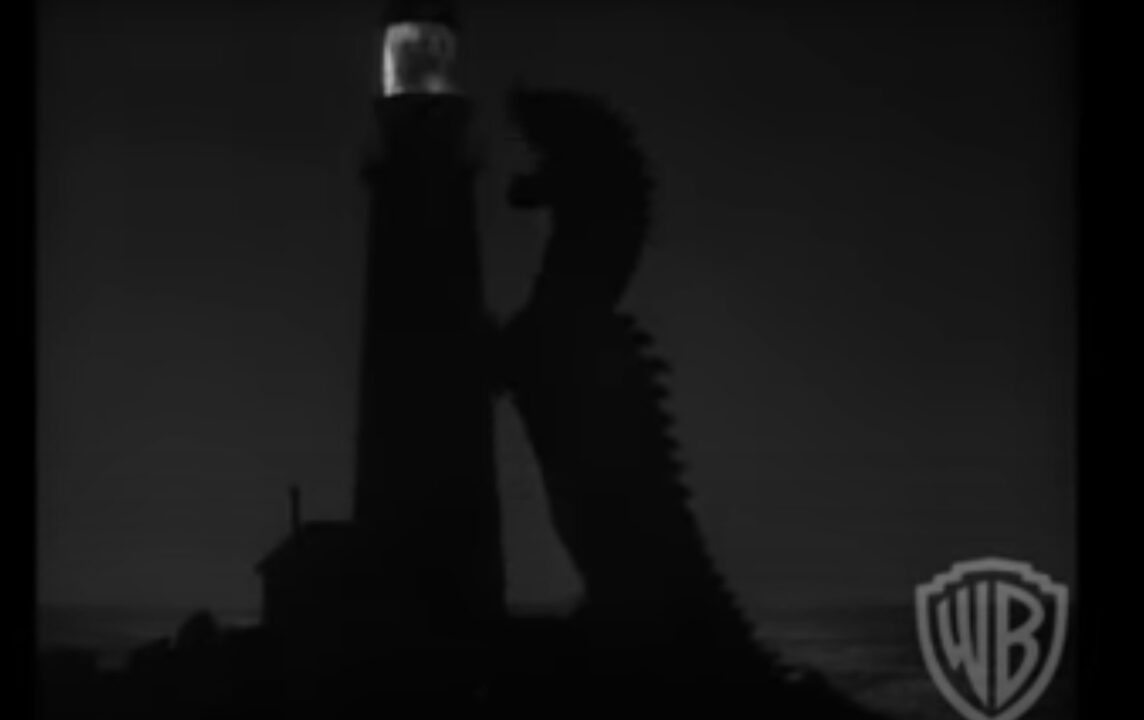
The Rhedosaurus attacks a lighthouse in The Beast From 20,000 Fathoms, the only scene directly referencing the Ray Bradbury short story that inspired the film. (youtube.com/@WarnerBrosCom)
The Beast From 20,000 Fathoms showed studios that audiences would have an appetite for more of these sorts of movies. The production was budgeted at about $200,000, with Warner Bros. acquiring it for an additional $800,000, and it ended up grossing about $5 million, becoming the ninth-highest grossing title of 1953 (sandwiched between two Marilyn Monroe features: How to Marry a Millionaire at No. 8, and Niagara at No. 10).
A few years later, Harryhausen would contribute another classic nuclear-spawned movie monster to this genre — the giant octopus of 1955’s It Came From Beneath the Sea — while going on to mostly create fantastic beasts spawned from myth and legend.
At least one of those later monsters was inspired somewhat by The Beast From 20,000 Fathoms; Harryhausen reused parts of his Rhedosaurus model in creating his famous dragon for 1958’s fantasy adventure The 7th Voyage of Sinbad, which, perhaps not coincidentally, happens to be another of my childhood faves.

